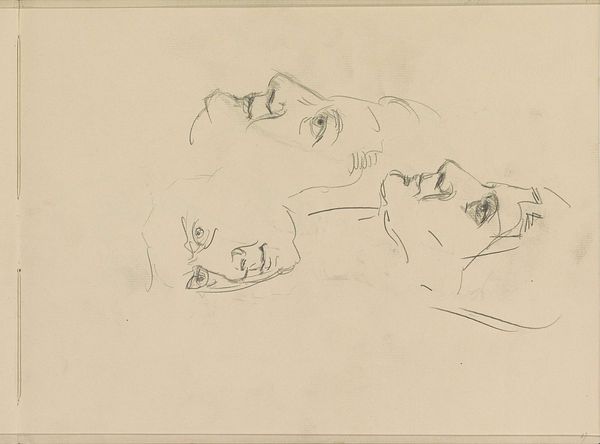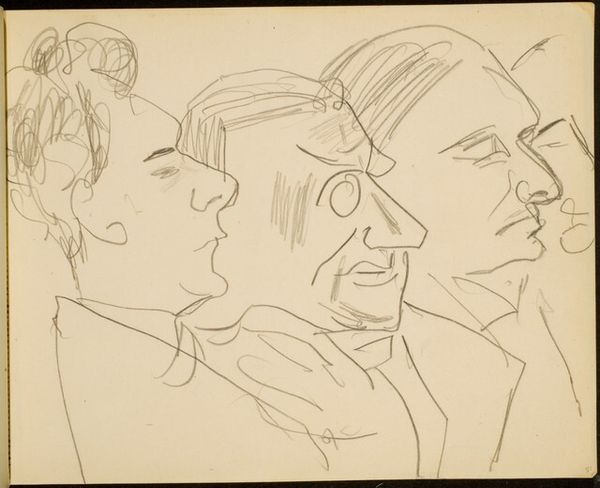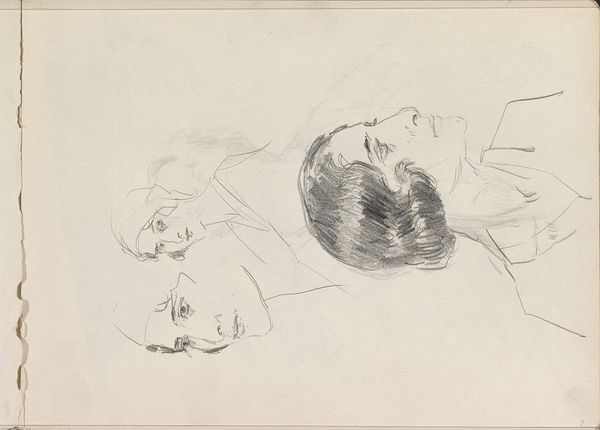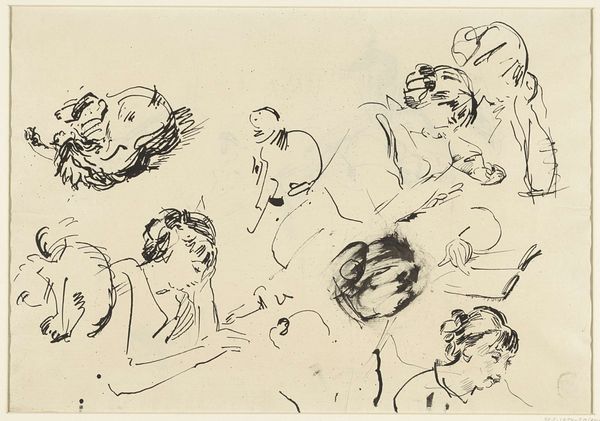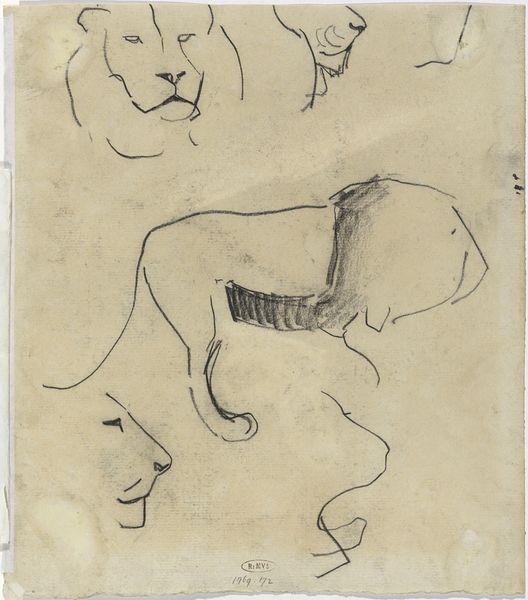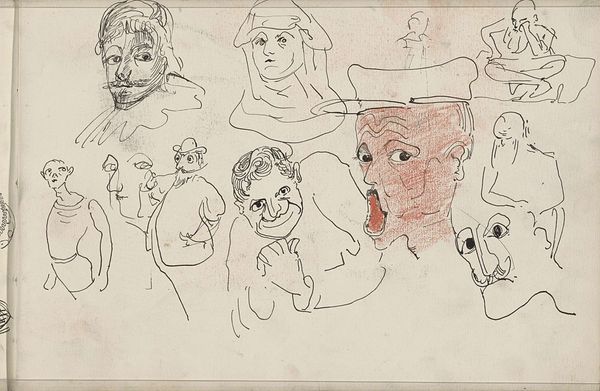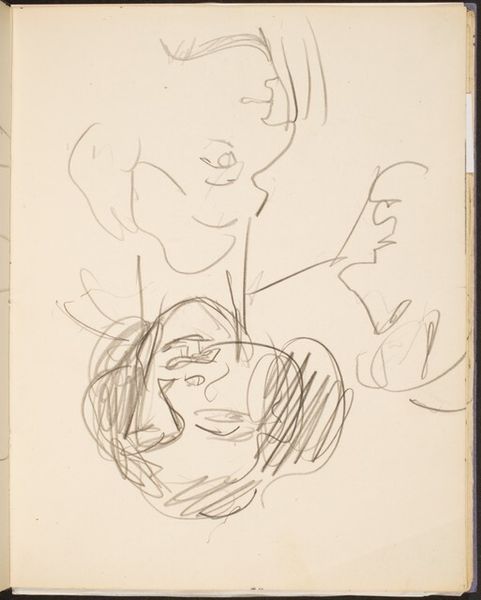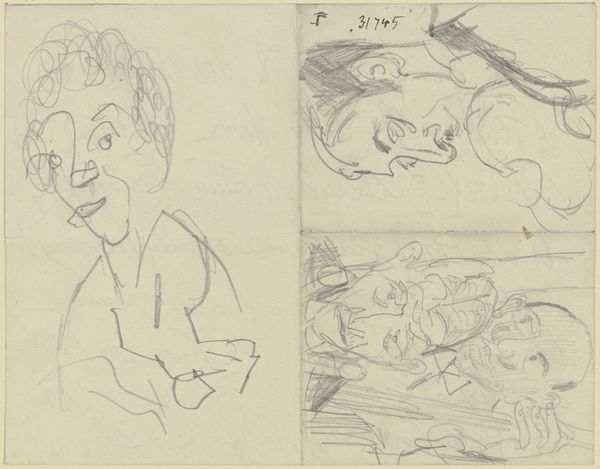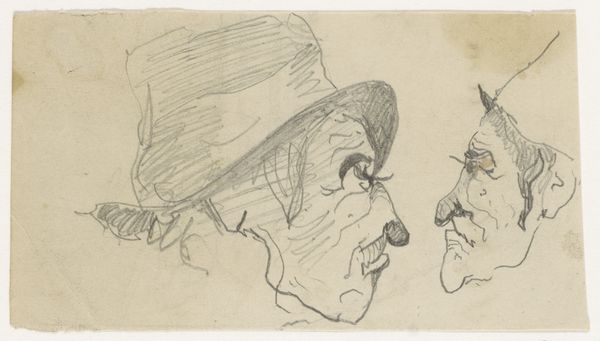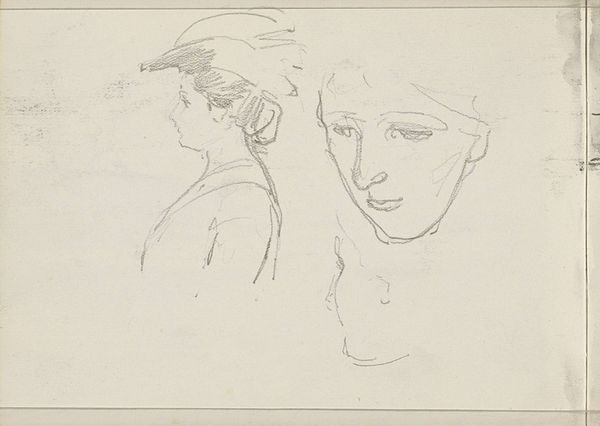
Copyright: Rijks Museum: Open Domain
Editor: Here we have "Studieblad met vrouwenhoofden," or "Study Sheet with Women's Heads," by Isaac Israels, made sometime between 1875 and 1934. It’s a collection of ink drawings on paper, housed here in the Rijksmuseum. I’m really struck by how immediate and intimate it feels – almost like catching a glimpse into the artist’s personal sketchbook. What's your take on it? Curator: This sheet offers a fascinating view into Israels’ artistic process. Rather than a polished work intended for public display, it's a working document. Considering the socio-political context of the late 19th and early 20th centuries, these quick sketches suggest a changing attitude toward women in art. He's not creating formal portraits, but exploring different visages. They lack idealized features or staged poses often demanded by the contemporary Salon. What does this imply, do you think, about Israels' position on the public representation of women at the time? Editor: That’s interesting. I guess it suggests he might be pushing against traditional portrayals, representing women in a more realistic, less posed way? Maybe capturing everyday expressions or thoughts that wouldn’t be seen in formal portraiture. Curator: Precisely. Consider also that Israels was deeply involved with the Hague School and later with Impressionism – movements that challenged academic painting and embraced everyday life. This "study sheet" echoes that spirit. Moreover, how do you think displaying sketches like these within the walls of the Rijksmuseum shapes the understanding of both the artist and artistic production itself? Editor: I see your point. By showing these sketches, the museum gives legitimacy to the creative process. It presents Israels not just as a creator of finished products, but as someone who experiments and explores, just like any artist working today. Curator: Exactly! These sketches also implicitly acknowledge women in the arts. Rather than them only appearing posed, it reveals an interest in diverse female personas. That reflects the beginning of change regarding what was allowed on view in public places. What's your takeaway from all this? Editor: I hadn’t thought about this drawing as a reflection of societal shifts, but looking at it that way adds another layer of depth. Thanks for that perspective. Curator: My pleasure! Seeing art within its social and historical context often provides a richer understanding of both the work and the artist's intent.
Comments
No comments
Be the first to comment and join the conversation on the ultimate creative platform.
